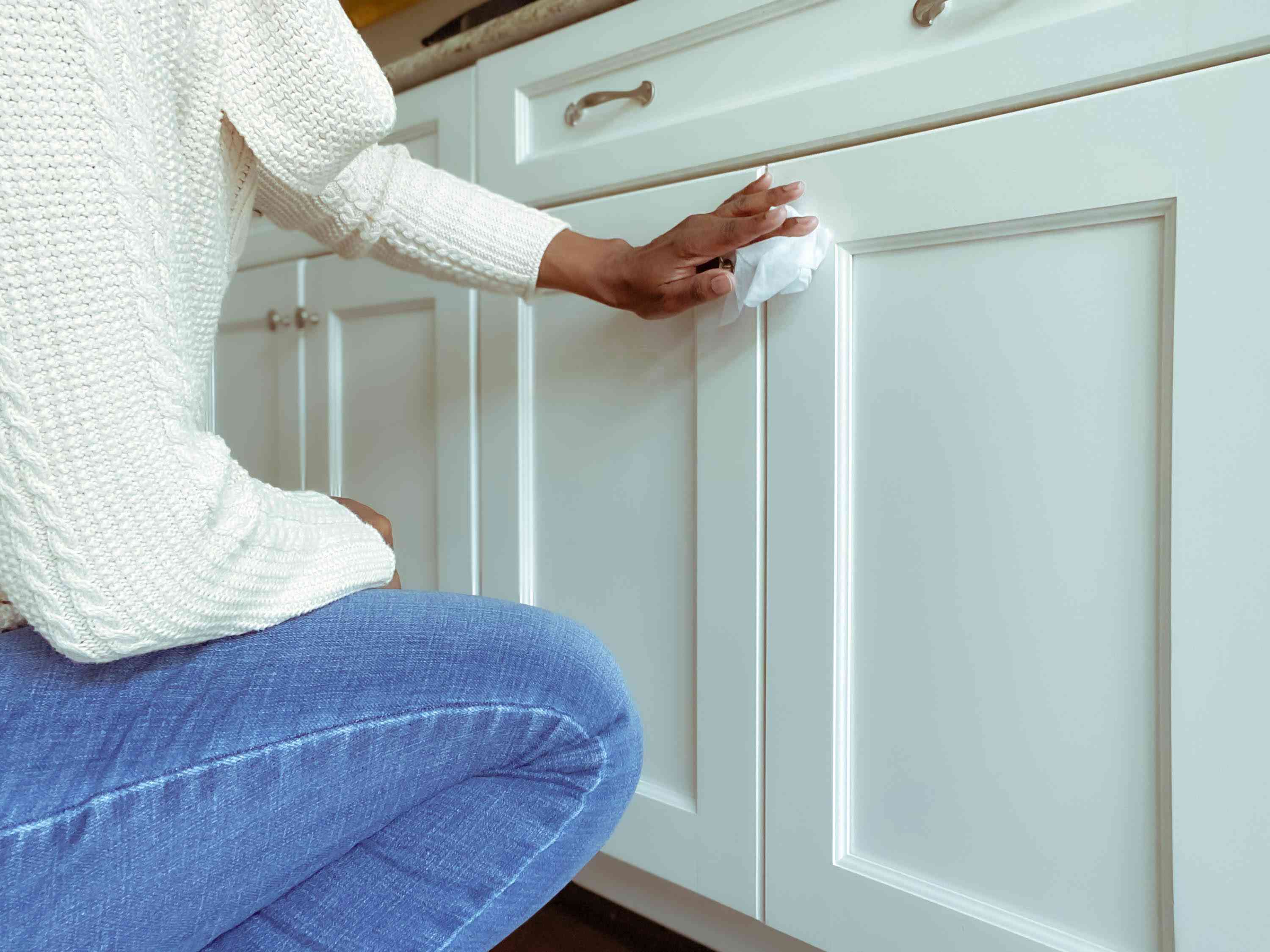
Depending on the color of your cabinets , you might not notice inevitable grease buildup until you feel the sticky residue. Regardless of whether or not you can see the unsightly stains, it's always a great idea to give your kitchen cabinets a wipe down every now and then. In this guide, we're dishing out (pun intended) the best methods for tackling grease stains for clean, beautiful cabinets.
Before You Begin
There are a few pre-degreasing measures you need to take before you begin cleaning your cabinets . The first is to ensure you have proper ventilation in the room if you're using store-bought degreasers with chemicals in them. While you're at it, you should also put on a pair of safety gloves to protect your hands from coming into contact with any harsh cleaners.
In addition to looking after yourself, make sure to maintain your cabinets as well. Prior to applying any intensive cleaning techniques, try them first on an unnoticeable section to confirm they won’t harm the cabinets. Additionally, refrain from using too much water on wooden cabinets to avoid causing distortion due to moisture.
What You'll Need
The specific tools and materials required can differ based on the chosen cleaning approach. However, generally speaking, these are the things you should prepare when dealing with greasy cabinets.
- Liquid detergent with hot water
- Baking soda
- White vinegar
- Lemon juice
- Commercial degreaser (optional)
- Microfiber cloths or sponges
- Soft-bristle brush
- Spray bottle
- Dry towel
Method 1: Liquid Dish Soap and Hot Water
For minor grease spots, dish soap combined with warm water usually does the job. Follow these steps accordingly:
- Mix together a few drops of dish soap to a bowl of warm water.
- Soak your cloth in the water solution and gently dab at the spot, moving across the direction of the grain if your cabinetry is wooden.
- Use a clean cloth to wipe the surface dry.
Method 2: Vinegar and Water Mixture
Vinegar is a beloved household cleaner For a specific purpose. It's an effective natural cleaner for removing grease stains by following these steps:
- Combine equal amounts of lukewarm water and vinegar in a small spray container.
- Apply a little bit of the solution to the greasy spots.
- Allow the solution to remain for a few minutes.
- Clean using a slightly moistened cloth. Should the marks remain, attempt gentle rubbing with a soft-bristle brush.
Method 3: Baking Soda Poultice
When tackling stubborn, caked-on grease stains, a baking soda paste should be your top choice. Follow these steps for using this technique.
- Combine into a paste using equal measures of baking soda and half as much water.
- Spread the paste onto the greasy spots and allow it to remain for several minutes.
- Use a soft cloth to wipe away the stain.
Method 4: Commercial Degreasers
Of course, you can never go wrong with using commercial degreasers to remove the stains if the other methods aren't solving the problem. The key for using this method safely and properly is to choose a product that won't damage the material of your cabinets, and to test a small amount first before using it on larger areas.
We recommend the following commercial degreasers for tackling your kitchen cabinets:
- Simple Green
- Method
- 409
- Easy-Off
Preventative Measures
While there's no way to prevent grease from splattering on your cabinets, there are a few preventative measures you can take to keep your cabinets clean. The first is to stick to a consistent cleaning routine. If you see grease stains after cooking, wipe them up immediately. Or, you can add wiping down your cabinets to your weekly cleaning chore list .
It’s advisable to maintain adequate ventilation in the kitchen during cooking, such as using your range hood. This helps extract airborne grease and stops it from settling on cabinetry or other areas within your kitchen.
Finally, ensure you apply high-quality finishes on your cabinets to maintain them as free from grease as possible. Coatings such as polyurethane, varnish, or laminates create an extra layer of protection against greasy materials.
Related: The Most Effective Method to Remove Grease from Any Surface in Your Kitchen
Read the initial article on Southern Living